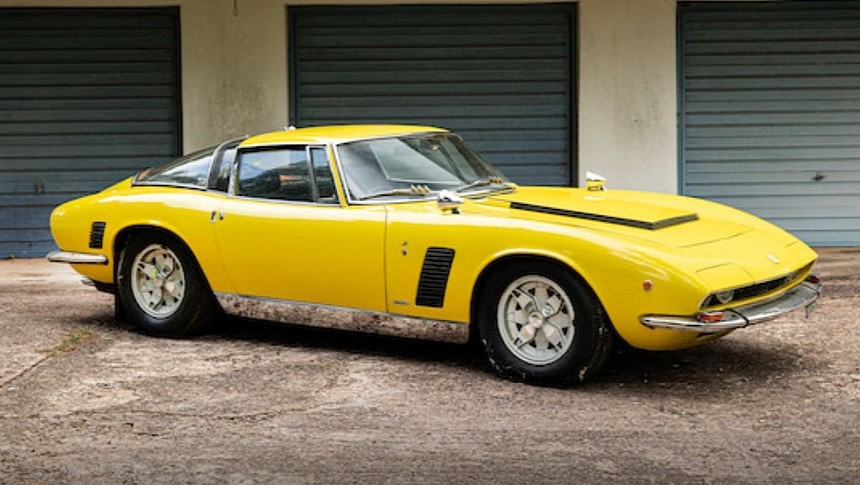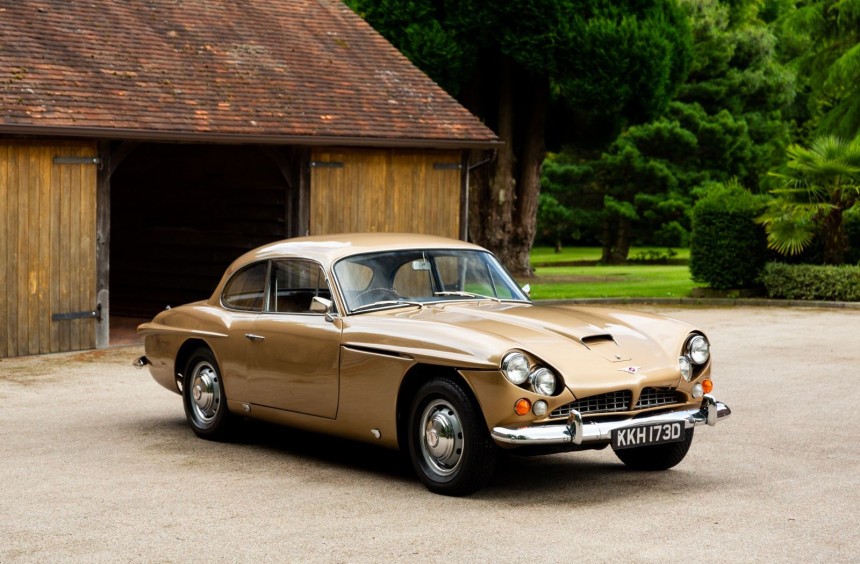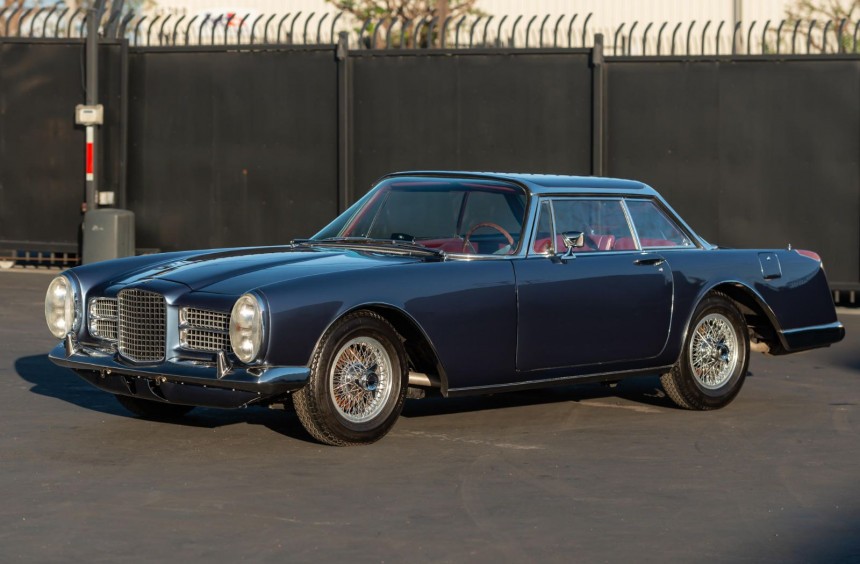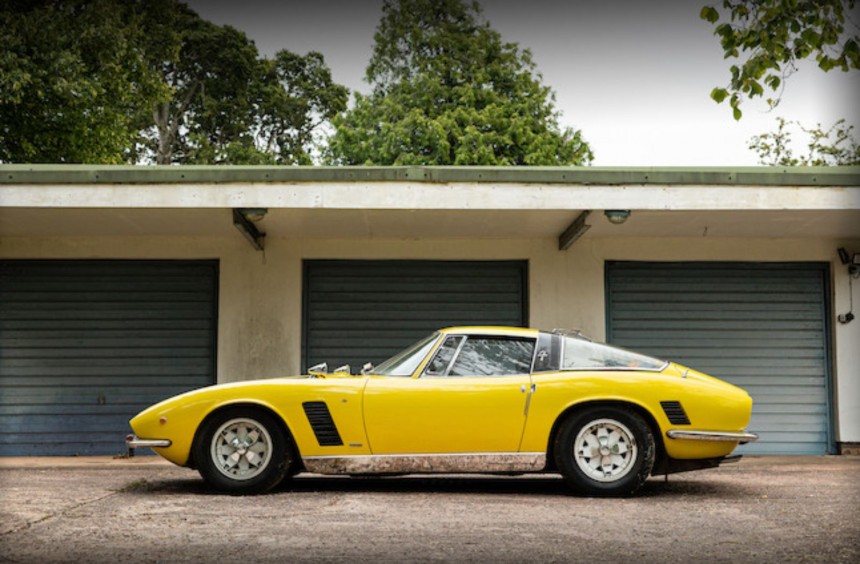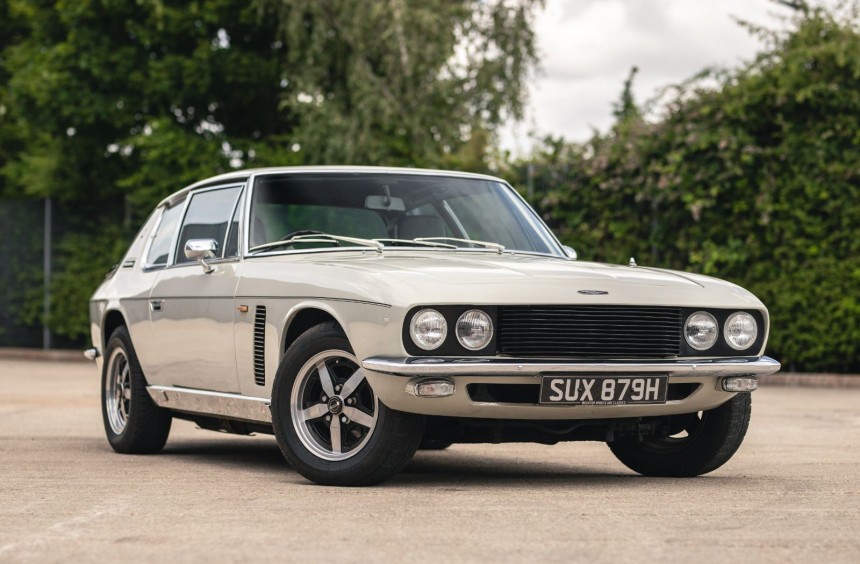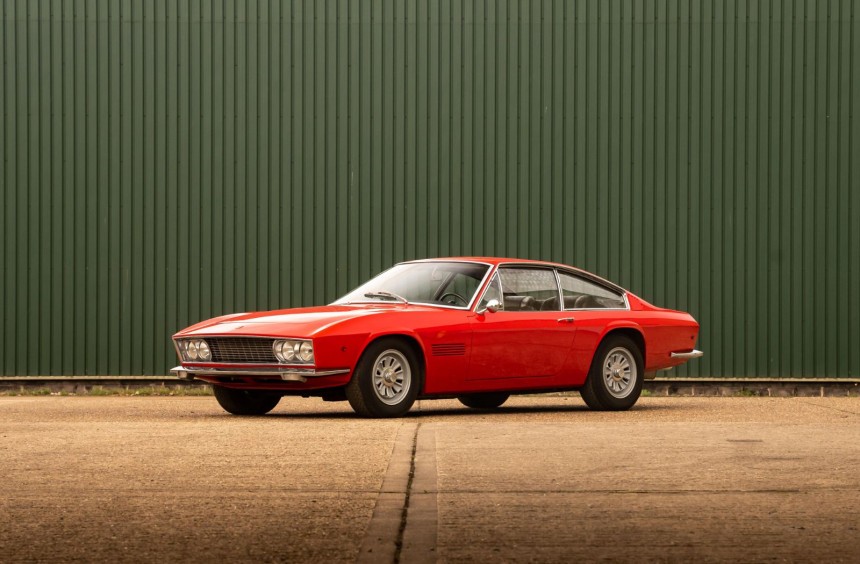Although not as famous as the Ferraris, Maseratis, Jaguars, or Aston Martins of the 1960s and 1970s, these five models earned their place in the proverbial GT Hall of Fame for combining American power with timeless European styling.
For most classic car enthusiasts, the perfect car is one of the many grand tourers (GTs) developed during the 1960s and 1970s.
Designed for long-distance, high-speed driving and oozing luxury, these two-seat (or 2+2), front-engine cars originated in Europe during the 1950s. Among the first models to be considered thoroughbred grand tourers were the Lancia Aurelia B20 GT and Mercedes-Benz 300SL.
However, some of the finest GTs in automotive history were built during the 1960s and 1970s. These include icons like the Ferrari 250 GT Lusso, Aston Martin DB5, or Maserati 3500 GT.
Although the European GT ethos influenced several American models from the same era, Detroit's Big Three was more focused on the cheaper, high-performance beasts we now call muscle cars.
During that era, some smaller European manufacturers decided to combine the best of both worlds, giving birth to exquisite GTs powered by American V8 muscle.
The now-defunct Jensen Motors was founded in the mid-1930s by brothers Alan and Richard Jensen, who took over and renamed the existing coachbuilding firm W J Smith & Sons (established in 1922).
Initially, Jensen continued to produce custom bodies for various manufacturers, but after hiring promising designer Eric Neale in 1946, the company started making its own cars.
After a few mildly successful models, Neale developed the 1954 541, a grand tourer that put Jensen on the map. However, by the late 1950s, the 541 and its last iteration, the 541 S, were considered obsolete.
Jensen needed a thoroughly improved successor, so in 1962, the company revealed Neale's second masterpiece, the C-V8.
Like its predecessor, it was built around a tubular steel chassis and featured a lightweight fiberglass body, but styling, luxury, and power were taken to another level.
While a 4.0-liter Austin D-Series inline-six powered the 541, the CV-8 received an American powertrain borrowed from the Chrysler C300. The first series of cars donned a 361-ci (5.9 liters) Golden Commando V8 rated at 295 hp. Then, the revised Mk II (1964) and Mk III (1965) were equipped with the larger 383-ci (6.3 liters) version of the engine, which made 330 hp. A Torqueflite three-speed auto was standard in both cases, but some Mk II and Mk III models received a four-speed manual.
When powered by the 383-ci lump, the Jensen CV-8 could reach 60 mph (97 kph) from a standstill in 6.7 seconds. It was the quickest British production car from 0-60 and one of the fastest grand tourers of the 1960s.
Established in 1939, Facel was initially a division of the French military aircraft manufacturer Bronzavia, but after the Second World War ended, it shifted its focus to building custom bodies.
In 1954, chief designer Jean Daninos purchased the company and started work on what would become France's most legendary grand tourer. Called Facel Vega, the car was produced in various iterations that culminated with the gorgeous Facel II in 1962.
With a beautifully sculptured body, an ultra-luxurious interior, and brutal American V8 power, the Facel II was a favorite among the era's celebrities. Its star-studded list of owners included Pablo Picasso, Tony Curtis, Christian Dior, Ava Gardner (who had three), Anthony Quinn, Debbie Reynolds, and Frank Sinatra.
Initially, the power came from a 392-ci (6.4 liters) FirePower "Typhoon" HEMI borrowed from the Chrysler 300. Linked to either a 3-speed TorqueFlite or a Pont-a-Mousson four-speed manual and equipped with twin for-barrel carbs, the V8 delivered 355 hp.
Later models received even more power courtesy of a 380-hp, 413-ci (6.8 liter) Chrysler "wedge" V8. In this configuration, the Facel II out-accelerated nearly all 1960 grand tourers and supercars to 60 mph (97 kph).
Iso Rivolta traces its origins to a small company that produced electric heaters and chillers. After being purchased by engineer Renzo Rivolta, it became a successful scooter and motorcycle manufacturer.
In the early 1950s, it expanded to automobile production by launching the small Iso Isetta. While this model failed in Italy, the rights to its design were purchased by BMW, and the Issetta became a hit in war-ravaged Germany.
Despite the failure of the tiny bubble car, Renzo Rivolta didn't give up on the automotive business, and in 1962, he launched a classy grand tourer dubbed Iso Rivolta IR 300.
After securing a powertrain deal with General Motors, Rivolta set his sights even higher by commissioning the development of a GT capable of competing with Ferrari and Maserati's finest.
With a beautiful body designed by Giorgetto Giugiaro and a chassis developed by the legendary Giotto Bizzarrini, the new Iso Grifo didn't put Ferrari nor Maserati out of business but became a legendary Italian grand tourer in its own right.
Produced from 1965 to 1974 in three distinct series and available in several trims, the Iso Grifo was initially powered by a Chevy 327 (5.4-liters) small-block rated between 300 and 350 hp, depending on the chosen setup. The engine was mated to a Borg-Warner four-speed manual, but further down the line, a 3-speed automatic also became available.
In 1968, the Grifo 7 Litri was introduced, and, as its name implied, it came with a 427-ci (7.0 liters) L71 big block that could make 435 hp. A few Series II models called Can-Am were also equipped with the newer 395-hp, 454-ci (7.4 liters) big block and a 5-speed manual in the early 1970s.
The final evolution of the Grifo was the 1972 IR-8. This model dropped the Chevy powertrain in favor of a Ford Boss 351 that made 330 hp.
Only 413 Grifos were built, and many were sold in the US. Today, the Iso Grifo is among the most appreciated and sought-after American V8-powered Euro GTs.
The Jensen CV-8 proved to be a successful model in Europe and the US, so during the mid-1960s, the British carmaker began developing a successor.
Called Interceptor - a name previously used by another Jensen model from the 1950s - the new grand tourer featured a thoroughly redesigned aluminum body instead of the fiberglass structure of prior models.
With standard features like electric windows, power steering (from 1966), four-wheel disc brakes, reclining front seats, a high-quality radio with twin speakers, and an electric clock, the Interceptor was both a high-tech and a luxurious GT. It was also a very powerful, thanks to the Chrysler-sourced engines it used.
The first models (Mark I and II) were equipped with 383-ci (6.3 liters) big blocks that made up to 335 hp. But, when Chrysler detuned this engine for use with regular gasoline in 1971, Jensen switched to the larger 440-ci (7.2 liters) V8. This engine was available in two configurations.
The first was equipped with a four-barrel carb and was rated at 305 hp, while the second was the tripe two-barrel carb "Six Pack" that produced 330 hp. The latter was only available in 1971 on a special edition dubbed Jensen SP (without Interceptor badging).
The last, most anemic Chrysler engine was the 250-hp, 360-ci (5.9 liters) small block used in Mark III models near the end of the production run.
The Interceptor was built from 1966 to 1976 and became Jensen's best-selling model. It was also used as the base of the Jensen FF, the world's first non-off-road 4WD production vehicle.
The last entry on this list comes from a country more famous for chocolate or army knives rather than cars.
Founded in 1967 by Peter Monteverdi, the company survived on the market for just 17 years (an attempt to relaunch the brand in 1992 failed), but despite that, it managed to produce some exciting vehicles.
Arguably the most exciting was the High Speed, a beautiful grand tourer introduced in 1967. Marketed until 1976, it was initially a two-seater that eventually morphed into a 2+2.
Throughout its lifespan, it featured bodywork designed by Italian coachbuilders Frua and later Fissore. Though most submodels were two-door coupes, a limited series of convertibles and a four-door sedan were also built.
Like most entries on this list, the High Speed used Chrysler powertrains. Most cars were equipped with either the 375-hp, 7.2-liter Magnum 440 V8, but a few early-1970 models received the optional 426-ci (7.0-liter) HEMI conservatively rated at 425 hp.
In the latter configuration, the High Speed lived up to its name, accelerating from 0 to 60 mph (97 kph) in 6.1 seconds. It was one of the fastest grand tourers of the period, but due to poor advertising, it never managed to reach its full potential.
Designed for long-distance, high-speed driving and oozing luxury, these two-seat (or 2+2), front-engine cars originated in Europe during the 1950s. Among the first models to be considered thoroughbred grand tourers were the Lancia Aurelia B20 GT and Mercedes-Benz 300SL.
However, some of the finest GTs in automotive history were built during the 1960s and 1970s. These include icons like the Ferrari 250 GT Lusso, Aston Martin DB5, or Maserati 3500 GT.
Although the European GT ethos influenced several American models from the same era, Detroit's Big Three was more focused on the cheaper, high-performance beasts we now call muscle cars.
During that era, some smaller European manufacturers decided to combine the best of both worlds, giving birth to exquisite GTs powered by American V8 muscle.
Jensen C-V8
Initially, Jensen continued to produce custom bodies for various manufacturers, but after hiring promising designer Eric Neale in 1946, the company started making its own cars.
After a few mildly successful models, Neale developed the 1954 541, a grand tourer that put Jensen on the map. However, by the late 1950s, the 541 and its last iteration, the 541 S, were considered obsolete.
Jensen needed a thoroughly improved successor, so in 1962, the company revealed Neale's second masterpiece, the C-V8.
Like its predecessor, it was built around a tubular steel chassis and featured a lightweight fiberglass body, but styling, luxury, and power were taken to another level.
While a 4.0-liter Austin D-Series inline-six powered the 541, the CV-8 received an American powertrain borrowed from the Chrysler C300. The first series of cars donned a 361-ci (5.9 liters) Golden Commando V8 rated at 295 hp. Then, the revised Mk II (1964) and Mk III (1965) were equipped with the larger 383-ci (6.3 liters) version of the engine, which made 330 hp. A Torqueflite three-speed auto was standard in both cases, but some Mk II and Mk III models received a four-speed manual.
When powered by the 383-ci lump, the Jensen CV-8 could reach 60 mph (97 kph) from a standstill in 6.7 seconds. It was the quickest British production car from 0-60 and one of the fastest grand tourers of the 1960s.
Facel Vega (Facel II)
In 1954, chief designer Jean Daninos purchased the company and started work on what would become France's most legendary grand tourer. Called Facel Vega, the car was produced in various iterations that culminated with the gorgeous Facel II in 1962.
With a beautifully sculptured body, an ultra-luxurious interior, and brutal American V8 power, the Facel II was a favorite among the era's celebrities. Its star-studded list of owners included Pablo Picasso, Tony Curtis, Christian Dior, Ava Gardner (who had three), Anthony Quinn, Debbie Reynolds, and Frank Sinatra.
Initially, the power came from a 392-ci (6.4 liters) FirePower "Typhoon" HEMI borrowed from the Chrysler 300. Linked to either a 3-speed TorqueFlite or a Pont-a-Mousson four-speed manual and equipped with twin for-barrel carbs, the V8 delivered 355 hp.
Later models received even more power courtesy of a 380-hp, 413-ci (6.8 liter) Chrysler "wedge" V8. In this configuration, the Facel II out-accelerated nearly all 1960 grand tourers and supercars to 60 mph (97 kph).
Iso Grifo
In the early 1950s, it expanded to automobile production by launching the small Iso Isetta. While this model failed in Italy, the rights to its design were purchased by BMW, and the Issetta became a hit in war-ravaged Germany.
Despite the failure of the tiny bubble car, Renzo Rivolta didn't give up on the automotive business, and in 1962, he launched a classy grand tourer dubbed Iso Rivolta IR 300.
After securing a powertrain deal with General Motors, Rivolta set his sights even higher by commissioning the development of a GT capable of competing with Ferrari and Maserati's finest.
With a beautiful body designed by Giorgetto Giugiaro and a chassis developed by the legendary Giotto Bizzarrini, the new Iso Grifo didn't put Ferrari nor Maserati out of business but became a legendary Italian grand tourer in its own right.
Produced from 1965 to 1974 in three distinct series and available in several trims, the Iso Grifo was initially powered by a Chevy 327 (5.4-liters) small-block rated between 300 and 350 hp, depending on the chosen setup. The engine was mated to a Borg-Warner four-speed manual, but further down the line, a 3-speed automatic also became available.
In 1968, the Grifo 7 Litri was introduced, and, as its name implied, it came with a 427-ci (7.0 liters) L71 big block that could make 435 hp. A few Series II models called Can-Am were also equipped with the newer 395-hp, 454-ci (7.4 liters) big block and a 5-speed manual in the early 1970s.
The final evolution of the Grifo was the 1972 IR-8. This model dropped the Chevy powertrain in favor of a Ford Boss 351 that made 330 hp.
Only 413 Grifos were built, and many were sold in the US. Today, the Iso Grifo is among the most appreciated and sought-after American V8-powered Euro GTs.
Jensen Interceptor
Called Interceptor - a name previously used by another Jensen model from the 1950s - the new grand tourer featured a thoroughly redesigned aluminum body instead of the fiberglass structure of prior models.
With standard features like electric windows, power steering (from 1966), four-wheel disc brakes, reclining front seats, a high-quality radio with twin speakers, and an electric clock, the Interceptor was both a high-tech and a luxurious GT. It was also a very powerful, thanks to the Chrysler-sourced engines it used.
The first models (Mark I and II) were equipped with 383-ci (6.3 liters) big blocks that made up to 335 hp. But, when Chrysler detuned this engine for use with regular gasoline in 1971, Jensen switched to the larger 440-ci (7.2 liters) V8. This engine was available in two configurations.
The first was equipped with a four-barrel carb and was rated at 305 hp, while the second was the tripe two-barrel carb "Six Pack" that produced 330 hp. The latter was only available in 1971 on a special edition dubbed Jensen SP (without Interceptor badging).
The last, most anemic Chrysler engine was the 250-hp, 360-ci (5.9 liters) small block used in Mark III models near the end of the production run.
The Interceptor was built from 1966 to 1976 and became Jensen's best-selling model. It was also used as the base of the Jensen FF, the world's first non-off-road 4WD production vehicle.
Monteverdi High Speed
Founded in 1967 by Peter Monteverdi, the company survived on the market for just 17 years (an attempt to relaunch the brand in 1992 failed), but despite that, it managed to produce some exciting vehicles.
Arguably the most exciting was the High Speed, a beautiful grand tourer introduced in 1967. Marketed until 1976, it was initially a two-seater that eventually morphed into a 2+2.
Throughout its lifespan, it featured bodywork designed by Italian coachbuilders Frua and later Fissore. Though most submodels were two-door coupes, a limited series of convertibles and a four-door sedan were also built.
Like most entries on this list, the High Speed used Chrysler powertrains. Most cars were equipped with either the 375-hp, 7.2-liter Magnum 440 V8, but a few early-1970 models received the optional 426-ci (7.0-liter) HEMI conservatively rated at 425 hp.
In the latter configuration, the High Speed lived up to its name, accelerating from 0 to 60 mph (97 kph) in 6.1 seconds. It was one of the fastest grand tourers of the period, but due to poor advertising, it never managed to reach its full potential.
